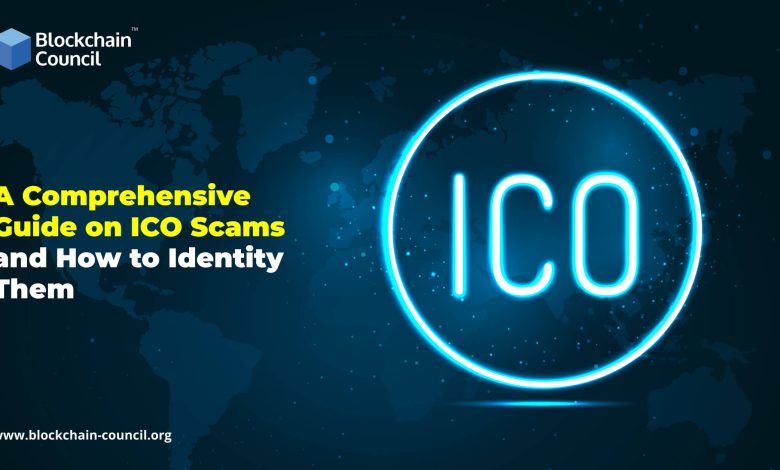How to Identify and Avoid Fake ICOs and Tokens

- Understanding the risks of fake ICOs and tokens
- Common signs of a fake ICO or token
- Research tips to identify legitimate ICOs and tokens
- Red flags to watch out for when investing in ICOs
- Steps to take to avoid falling for a fake ICO or token
- Protecting your investments from fraudulent ICOs
Understanding the risks of fake ICOs and tokens
It is crucial to understand the risks associated with fake ICOs and tokens in the cryptocurrency market. Fake ICOs and tokens can lead to financial losses and damage to one’s reputation in the industry. By being aware of the red flags and warning signs, investors can protect themselves from falling victim to scams.
One of the main risks of fake ICOs and tokens is the potential for fraud. Scammers often create fake projects with the intention of deceiving investors and stealing their money. These fraudulent schemes can be difficult to detect, as scammers may use sophisticated tactics to make their projects appear legitimate.
Another risk of fake ICOs and tokens is the lack of regulation and oversight in the cryptocurrency market. Without proper regulation, investors are more vulnerable to scams and fraudulent activities. It is essential for investors to conduct thorough research and due diligence before investing in any ICO or token sale.
Furthermore, fake ICOs and tokens can also damage the reputation of the cryptocurrency industry as a whole. When investors fall victim to scams, it can erode trust in the market and discourage new participants from getting involved. This can have long-term consequences for the growth and development of the industry.
Overall, understanding the risks of fake ICOs and tokens is essential for investors looking to navigate the cryptocurrency market safely. By staying informed and vigilant, investors can protect themselves from falling prey to scams and fraudulent activities.
Common signs of a fake ICO or token
When looking to invest in an ICO or token sale, it is crucial to be able to identify the common signs of a fake project. By being aware of these red flags, you can protect yourself from falling victim to scams and fraudulent schemes. Here are some key indicators to watch out for:
- Unrealistic promises: If an ICO or token sale is promising guaranteed returns or claims to have a “risk-free” investment opportunity, it is likely too good to be true.
- Anonymous team: A legitimate project will have a transparent team with verifiable identities and relevant experience. If the team members are anonymous or have questionable backgrounds, proceed with caution.
- Plagiarized whitepaper: A fake ICO may copy content from other projects’ whitepapers or use generic templates. Make sure to thoroughly review the whitepaper for originality and quality.
- Lack of community engagement: Genuine projects will have an active community of supporters and investors. If an ICO has minimal social media presence or lacks engagement, it could be a sign of a scam.
- Unclear use case: A legitimate ICO will clearly outline its use case, target market, and technology. If the project’s purpose is vague or lacks a solid business model, it may not be a legitimate investment opportunity.
By being vigilant and conducting thorough research, you can avoid fake ICOs and tokens and protect your investments. Remember to always verify the legitimacy of a project before committing any funds, and seek advice from trusted sources in the cryptocurrency community.
Research tips to identify legitimate ICOs and tokens
When researching ICOs and tokens, it is crucial to be diligent and thorough in your investigation to ensure you are investing in legitimate projects. Here are some research tips to help you identify and avoid fake ICOs and tokens:
- Check the team behind the project: Look into the backgrounds of the team members to see if they have relevant experience and a good reputation in the industry.
- Review the whitepaper: A detailed and well-written whitepaper is a good sign of a legitimate project. Make sure the project’s goals, technology, and roadmap are clearly outlined.
- Look for a working product: If the project already has a prototype or beta version of their product, it is a positive indicator that they are making progress towards their goals.
- Check the community and social media presence: Legitimate projects usually have an active community and a strong presence on social media platforms. Look for engagement and positive feedback from users.
- Verify partnerships and endorsements: If the project claims to have partnerships with reputable companies or endorsements from industry experts, make sure to verify these claims to confirm their legitimacy.
By following these research tips, you can better evaluate ICOs and tokens to identify legitimate projects and avoid falling victim to fake ICOs and tokens. Remember to always conduct thorough due diligence before making any investment decisions in the cryptocurrency space.
Red flags to watch out for when investing in ICOs
When considering investing in ICOs, it is crucial to be aware of red flags that may indicate a potential scam. By being vigilant and conducting thorough research, you can avoid falling victim to fake ICOs and tokens. Here are some red flags to watch out for:
- Unrealistic promises: Be wary of ICOs that promise guaranteed returns or claim to have a “risk-free” investment. Remember, all investments carry some level of risk, and no one can guarantee profits.
- Anonymous team: If the team behind the ICO is not transparent about their identities or experience, it could be a sign that they are trying to hide something.
- Lack of a solid business plan: A legitimate ICO should have a clear and detailed business plan that outlines how the project will be developed and sustained.
- Plagiarized whitepaper: Check the ICO’s whitepaper for originality. If you find that it has been copied from another project, it is likely a scam.
- Unrealistic token distribution: If the ICO allocates a large percentage of tokens to the team or founders, it could indicate that they are more interested in making a quick profit than in developing a successful project.
By keeping an eye out for these red flags and conducting thorough due diligence, you can protect yourself from falling victim to fake ICOs and tokens. Remember, it is always better to be safe than sorry when it comes to investing your hard-earned money.
Steps to take to avoid falling for a fake ICO or token
When it comes to avoiding falling for a fake ICO or token, there are several steps you can take to protect yourself from potential scams. By following these guidelines, you can minimize the risk of being duped by fraudulent projects:
- Research the team behind the ICO or token. Look for information about their experience, qualifications, and track record in the industry. A reputable team with a history of successful projects is more likely to be legitimate.
- Check the project’s whitepaper for detailed information about its goals, technology, and roadmap. Be wary of vague or overly ambitious claims that lack substance.
- Verify the project’s partnerships and endorsements. Legitimate projects often have support from reputable companies, investors, or advisors. If the endorsements seem questionable or non-existent, it could be a red flag.
- Look for a clear and transparent token distribution plan. Make sure you understand how the tokens will be allocated, how they will be used within the project, and what rights they confer to holders.
- Be cautious of projects that promise guaranteed returns or use high-pressure sales tactics to encourage investment. Remember that all investments carry risk, and there are no guarantees in the world of cryptocurrency.
By taking these precautions and staying informed about the latest developments in the cryptocurrency space, you can reduce the likelihood of falling victim to a fake ICO or token. Remember to always trust your instincts and seek advice from trusted sources before making any investment decisions.
Protecting your investments from fraudulent ICOs
Protecting your investments from fraudulent ICOs is crucial in the volatile world of cryptocurrency. There are several steps you can take to safeguard your funds and avoid falling victim to scams.
- Research the team behind the ICO: Look into the backgrounds of the team members to ensure they have the necessary experience and expertise to carry out the project successfully.
- Check the project’s whitepaper: A detailed and well-written whitepaper is a good sign that the project is legitimate. Look for clear explanations of the technology and the problem it aims to solve.
- Verify partnerships and endorsements: If the project claims to have partnerships with well-known companies or endorsements from reputable individuals, do some research to confirm these claims.
- Watch out for red flags: Be wary of projects that promise guaranteed returns or use high-pressure sales tactics. Trust your instincts and if something seems too good to be true, it probably is.
- Use secure wallets: Once you have invested in an ICO, make sure to store your tokens in a secure wallet to protect them from hackers.
By following these guidelines, you can reduce the risk of falling victim to fraudulent ICOs and protect your investments in the ever-changing world of cryptocurrency.




